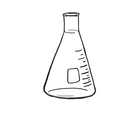
Laboratory Manual for an introductory level chemistry course.
- Subject:
- Chemistry
- Material Type:
- Activity/Lab
- Author:
- Veronica Stein
- Date Added:
- 06/25/2020

Laboratory Manual for an introductory level chemistry course.

An integrated course stressing the principles of biology. Life processes are examined primarily at the molecular and cellular levels. Intended for students majoring in biology or for non-majors who wish to take advanced biology courses.
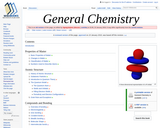
The modern human experience places a large emphasis upon the material world. From the day of our birth to the day we die, we are frequently preoccupied with the world around us. Whether struggling to feed ourselves, occupying ourselves with modern inventions, interacting with other people or animals, or simply meditating on the air we breathe, our attention is focused on different aspects of the material world. In fact only a handful of disciplines—certain subsets of religion, philosophy, and abstract math—can be considered completely unrelated to the material world. Everything else is somehow related to chemistry, the scientific discipline which studies the properties, composition, and transformation of matter.
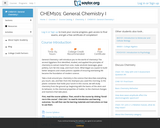
This survey chemistry course is designed to introduce students to the world of chemistry. In this course, we will study chemistry from the ground up, learning the basics of the atom and its behavior. We will apply this knowledge to understand the chemical properties of matter and the changes and reactions that take place in all types of matter. Upon successful completion of this course, students will be able to: Define the general term 'chemistry.' Distinguish between the physical and chemical properties of matter. Distinguish between mixtures and pure substances. Describe the arrangement of the periodic table. Perform mathematical operations involving significant figures. Convert measurements into scientific notation. Explain the law of conservation of mass, the law of definite composition, and the law of multiple proportions. Summarize the essential points of Dalton's atomic theory. Define the term 'atom.' Describe electron configurations. Draw Lewis structures for molecules. Name ionic and covalent compounds using the rules for nomenclature of inorganic compounds. Explain the relationship between enthalpy change and a reaction's tendency to occur. (Chemistry 101; See also: Biology 105. Mechanical Engineering 004)

The overall goal of the authors with General Chemistry: Principles, Patterns, and Applications was to produce a text that introduces the students to the relevance and excitement of chemistry.Although much of first-year chemistry is taught as a service course, Bruce and Patricia feel there is no reason that the intrinsic excitement and potential of chemistry cannot be the focal point of the text and the course. So, they emphasize the positive aspects of chemistry and its relationship to studentsŐ lives, which requires bringing in applications early and often. In addition, the authors feel that many first year chemistry students have an enthusiasm for biologically and medically relevant topics, so they use an integrated approach in their text that includes explicit discussions of biological and environmental applications of chemistry.

A three-quarter general chemistry sequence primarily for science, pre-professional, and engineering students. The CHEM& 161/162/163 series introduces the basic concepts of chemistry: atomic structure and bonding, periodicity, physical measurement, quantitative relationships, chemical reactivity, oxidation and reduction, stoichiometry, ideal gas laws, aqueous solutions, colligative properties, intermolecular forces, structure of matter, equilibrium, acid/base topics, kinetics, thermodynamics, electrochemistry, nuclear chemistry, qualitative analysis, d-block metals and coordination chemistry, and an introduction to organic chemistry.Login: guest_oclPassword: ocl
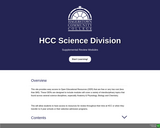
This lesson created in Softchalk is a repository for OER and online resources for students. The purpose of this site is to provide a single location to house resources for students who may need access to reviews of basic scientific information that is relevant across several disciplines, especially anatomy & physiology, biology and chemistry. For example, each of these disciplines requires a basic understanding of matter and atomic structure in order to understand reactions and how living organisms function.
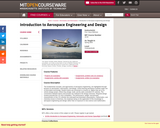
" The fundamental concepts, and approaches of aerospace engineering, are highlighted through lectures on aeronautics, astronautics, and design. Active learning aerospace modules make use of information technology. Student teams are immersed in a hands-on, lighter-than-air (LTA) vehicle design project, where they design, build, and fly radio-controlled LTA vehicles. The connections between theory and practice are realized in the design exercises. Required design reviews precede the LTA race competition. The performance, weight, and principal characteristics of the LTA vehicles are estimated and illustrated using physics, mathematics, and chemistry known to freshmen, the emphasis being on the application of this knowledge to aerospace engineering and design rather than on exposure to new science and mathematics."
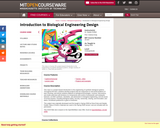
" This class is a project-based introduction to the engineering of synthetic biological systems. Throughout the term, students develop projects that are responsive to real-world problems of their choosing, and whose solutions depend on biological technologies. Lectures, discussions, and studio exercises will introduce (1) components and control of prokaryotic and eukaryotic behavior, (2) DNA synthesis, standards, and abstraction in biological engineering, and (3) issues of human practice, including biological safety; security; ownership, sharing, and innovation; and ethics. Enrollment preference is given to freshmen. This subject was originally developed and first taught in Spring 2008 by Drew Endy and Natalie Kuldell. Many of Drew's materials are used in this Spring 2009 version, and are included with his permission. This OCW Web site is based on the OpenWetWare class Wiki, found at OpenWetWare: 20.020 (S09)"
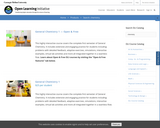
his is a complete course in chemical stoichiometry, which is a set of tools chemists use to count molecules and determine the amounts of substances consumed and produced by reactions. The course is set in a scenario that shows how stoichiometry calculations are used in real-world situations. The list of topics (see below) is similar to that of a high school chemistry course, although with a greater focus on reactions occurring in solution and on the use of the ideas to design and carry out experiments. Topics covered include: Dimensional Analysis, the Mole, Empirical Formulas, Limiting Reagents, Titrations, Reactions Involving Mixtures.
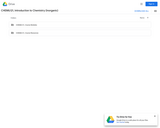
From consumer products to space-age technologies, chemistry affects our daily lives. In this course, students will learn the structure of matter and how it behaves under various conditions in order to better understand the chemical world. Designed for students with little or no chemistry background. Laboratory activities extend lecture concepts and introduce students to the experimental process. This course is designed for a face-to-face mode of instruction using online resources. Course content is divided into units. Each unit may include text readings, laboratory preparation, study questions, thought-provoking discussions, written assignments, learning activities, and group projects.Login: guest_oclPassword: ocl
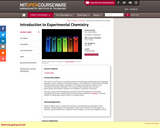
This course is the first part of a modular sequence of increasingly sophisticated (and challenging) laboratory courses required of all Chemistry majors: 5.35 Introduction to Experimental Chemistry, 5.36 Biochemistry and Organic Laboratory, 5.37 Organic and Inorganic Laboratory, and 5.38 Physical Chemistry Laboratory. This course provides students with a survey of spectroscopy, and introduces synthesis of coordination compounds and kinetics. This class is part of the new laboratory curriculum in the MIT Department of Chemistry. Undergraduate Research-Inspired Experimental Chemistry Alternatives (URIECA) introduces students to cutting edge research topics in a modular format. AcknowledgementsProfessor Nelson and Dr. Twardowski would like to acknowledge the contributions of MIT Professor Timothy Swager to the development of this course.
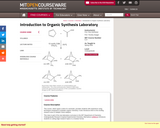
" This course, which spans a third of a semester, provides students with experienceĺĘusing techniques employed in synthetic organic chemistry. It alsoĺĘintroduces them to the exciting research area of catalytic chiral catalysis. This class is part of the new laboratory curriculum in the MIT Department of Chemistry. Undergraduate Research-Inspired Experimental Chemistry Alternatives (URIECA) introduces students to cutting edge research topics in a modular format."
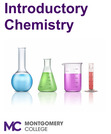
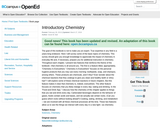
This survey should give you enough knowledge to appreciate the impact of chemistry in everyday life and, if necessary, prepare you for additional instruction in chemistry. Throughout each chapter, I present two features that reinforce the theme of the textbookthat chemistry is all around you. The first is a feature titled, appropriately, Chemistry Is Everywhere. Chemistry Is Everywhere focuses on the personal hygiene products that you may use every morning: toothpaste, soap, and shampoo, among others. These products are chemicals, arent they? Ever wonder about the chemical reactions that they undergo to give you clean and healthy teeth or shiny hair? I will explore some of these chemical reactions in future chapters. But this feature makes it clear that chemistry is, indeed, everywhere. The other feature focuses on chemistry that you likely indulge in every day: eating and drinking. In the Food and Drink App, I discuss how the chemistry of the chapter applies to things that you eat and drink every day. Carbonated beverages depend on the behavior of gases, foods contain acids and bases, and we actually eat certain rocks. (Can you guess which rocks without looking ahead?) Cooking, eating, drinking, and metabolismwe are involved with all these chemical processes all the time. These two features allow us to see the things we interact with every day in a new lightas chemistry.
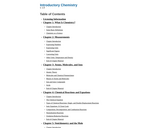
David W. Ball of Cleveland State University brings his new survey of general chemistry text, Introductory Chemistry, to the market with a fresh theme that will be sure to hold student interest: "Chemistry is Everywhere." Introductory Chemistry is intended for a one-semester introductory or preparatory chemistry course. Throughout the chapters, David presents two features that reinforce the theme of the textbook, that chemistry is everywhere.
The first is the boxed feature titled, appropriately, “Chemistry is Everywhere”. This feature takes a topic of the chapter and demonstrates how this topic shows up in everyday life. In the introductory chapter, “Chemistry is Everywhere” focuses on the personal hygiene products that students may use every morning: toothpaste, soap, shampoo among others. These products are chemicals, aren’t they? This book explores some of the chemical reactions like the ones that give students clean and healthy teeth, and shiny hair. This feature makes it clear to students that chemistry is, indeed, everywhere, and it will promote student retention in what is sometimes considered an intimidating course.
The second boxed feature focuses on chemistry that students likely indulge in every day: eating and drinking. In the “Food and Drink App”, David discusses how the chemistry of the chapter applies to things that students eat and drink every day. Carbonated beverages depend on the behavior of gases, foods contain acids and bases, and everyone actually eats certain rocks. (Yikes!) Cooking, eating, drinking, metabolism – all chemical processes students are involved with all the time.
These features allow students to see the things we interact with every day in a new light – as chemistry. Just like many of the one-semester chemistry books you may be used to, each section in David Ball's <="" em=""> starts with one or more Learning Objectives, which list the main points of the section. Each section ends with Key Takeaways, which are reviews of the main points of the section. Each chapter is full of examples to illustrate the key points of the materials, and each example is followed with a similar “Test Yourself” exercise to see if the student understands the concept. Each section ends with its own set of paired exercises to practice the material from that section, and each chapter ends with a section of “Additional Exercises” that are more challenging or require multiple steps or skills to answer.
David took the time to treat mathematical problems in Introductory Chemistry one of two ways, either as a conversion-factor problem or as a formula problem. David believes having two basic mathematical approaches (converting and formulas) allows the text to focus on the logic of the approach and not tricks or shortcuts; which speaks to the final point about Introductory Chemistry. You'll notice that David took no shortcuts with the material in this text, his inviting writing style, concise approach, consistent presentation, and interesting pedagogy have given it some of the best peer reviews we've seen.
Original Saylor URL: https://saylordotorg.github.io/text_introductory-chemistry/

The goal of this textbook is not to make you an expert. True expertise in any field is a years-long endeavor. Here I will survey some of the basic topics of chemistry. This survey should give you enough knowledge to appreciate the impact of chemistry in everyday life and, if necessary, prepare you for additional instruction in chemistry. Throughout each chapter, I present two features that reinforce the theme of the textbookthat chemistry is all around you. The first is a feature titled, appropriately, Chemistry Is Everywhere. Chemistry Is Everywhere focuses on the personal hygiene products that you may use every morning: toothpaste, soap, and shampoo, among others. These products are chemicals, arent they? Ever wonder about the chemical reactions that they undergo to give you clean and healthy teeth or shiny hair? I will explore some of these chemical reactions in future chapters. But this feature makes it clear that chemistry is, indeed, everywhere. The other feature focuses on chemistry that you likely indulge in every day: eating and drinking. In the Food and Drink App, I discuss how the chemistry of the chapter applies to things that you eat and drink every day. Carbonated beverages depend on the behavior of gases, foods contain acids and bases, and we actually eat certain rocks. (Can you guess which rocks without looking ahead?) Cooking, eating, drinking, and metabolismwe are involved with all these chemical processes all the time. These two features allow us to see the things we interact with every day in a new lightas chemistry.
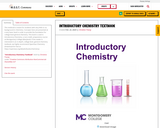
This textbook is meant for students with very little or no background in chemistry. Concepts here are presented at a very basic level in order to provide the foundation for college-level general chemistry. This book is used in Introductory Chemistry, a non-credit, preparatory course at Montgomery College (Maryland). If the reader is interested in an in-depth, college-level, general chemistry textbook, we highly recommend OpenStax Chemistry (Download for free at https://openstax.org/details/books/chemistry).
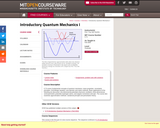
Fundamental concepts of quantum mechanics: wave properties, uncertainty principles, Schrodinger equation, and operator and matrix methods. Basic applications to: one-dimensional potentials (harmonic oscillator), three-dimensional centrosymetric potentials (hydrogen atom), and angular momentum and spin. Approximation methods: WKB method, variational principle, and perturbation theory.
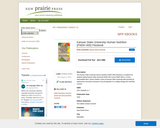
The Kansas State University Human Nutrition (FNDH 400) Flexbook is a textbook for students taking Kansas State University FNDH 400 course.FNDH 400 is a 3-hour, intermediate-level, human nutrition course at Kansas State University take primarily by sophomores and juniors because it has prerequisites of a college biology and chemistry courses.